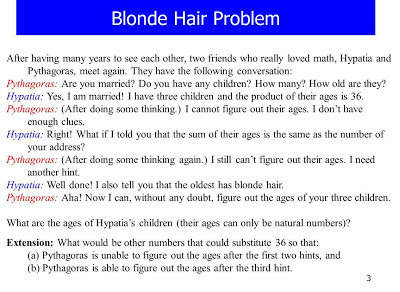Yesterday we took part on a fantastic session on
working in groups (note: categorically NOT group work.) The emphasis of this session was on using the activities in a pastoral setting, but many could be equally applied to a curriculum lesson.
Fruit Salad
This initially activity was an
icebreaker, where each person stated their name, their hero and a reason for their choice. The catch was, as we went around the circle, each person had to say the names and heroes / heroines of those that had previously introduced themselves. (N.B. The reasons for the choices do not have to be remembered) By the leader of the group positioning themselves at the end, this gives a good amount of time to learn names.
A further development for this is to have one person standing in the middle stating 2 heroes / heroines, who then have to move to another seat. The goal of the person in the middle is to get to the free seat before the movers can. If the person in the middle prefers, they can call "heroes" and everyone has to change seat.
Mathematical Adaptation
Substituting favourite number for heroes and heroines would also be a good icebreaker, as students often have interesting stories for their preferred numbers. In the latter part of the activity, mathematical sums could be given to arrive at possible favourite numbers, ranging from clues such 7+1 to sin(pi/2).
Chair Numbers
In this activity, each chair in the circle was assigned a number. Adapted from the
zoomy-zoomy drinking game, each player states their chair number, then another number, e.g 4 - 1. The catch here is that you cannot send it back to the chair you had before.
This activity can be developed to use different labels for the chairs, for example emotions then if the group is ready for it, they can then discuss which chair they think they should be on today and which chair they would least like to be on.
The final version was very effective in getting the members to be more comfortable with certain vocabulary, in the context of sex education.
Mathematical Adaptation
Each chair could be named by a mathematical keyword.
Teddy's 5
A chance for people to show their knowledge on a particular topic, those around the outside challenge the person in the middle to list 5 of a category, for example 5 football teams in the premiership. The person in the middle then has to list these before the teddy bear gets back around to the challenger.
Mathematical Adaptation
5 things associated with right-angled triangles. To ensure good topics were being selected, it might be useful to start with a card to be given to each person, from which they can select a topic. This would give a better idea of the style, then the group could move onto choosing their own.
I imagine...
Here the aim is to get out any preconceptions about a personand give the person in the spotlight the opportunity to coounter these, where in other situations they might not have had the opportunity.
When introducing this exercise it is important to give a mixture of superficial and meaningful examples, e.g.
- I imagine that you prefer cornflakes to rice krispies
- I imagine that you get on better with your Mum than your Dad
It must be stressed that you cannot say anything that you know to be true, only things that you imagine about a person.
Differences
Here, the person in the hotseat can only get out of it if they say somehting about themselves that isn't true of anyone else. If it is true of someone else, they must say so, and the person remains in the hotseat.
Positives
One person becomes the guesser, and faces outside the circle. By silent pointing, the group decides who is going to be described. Each person in the circle then has to describe the person with a postive thing, e.g. "This person has really nice blue eyes." Afterwards, the guesser can turn around before making a guess.
It is very important that no-one is able to pass, as this sets a precident. Instead, go back to that person at the end, to avoid slowling the pace.







.GIF)





























